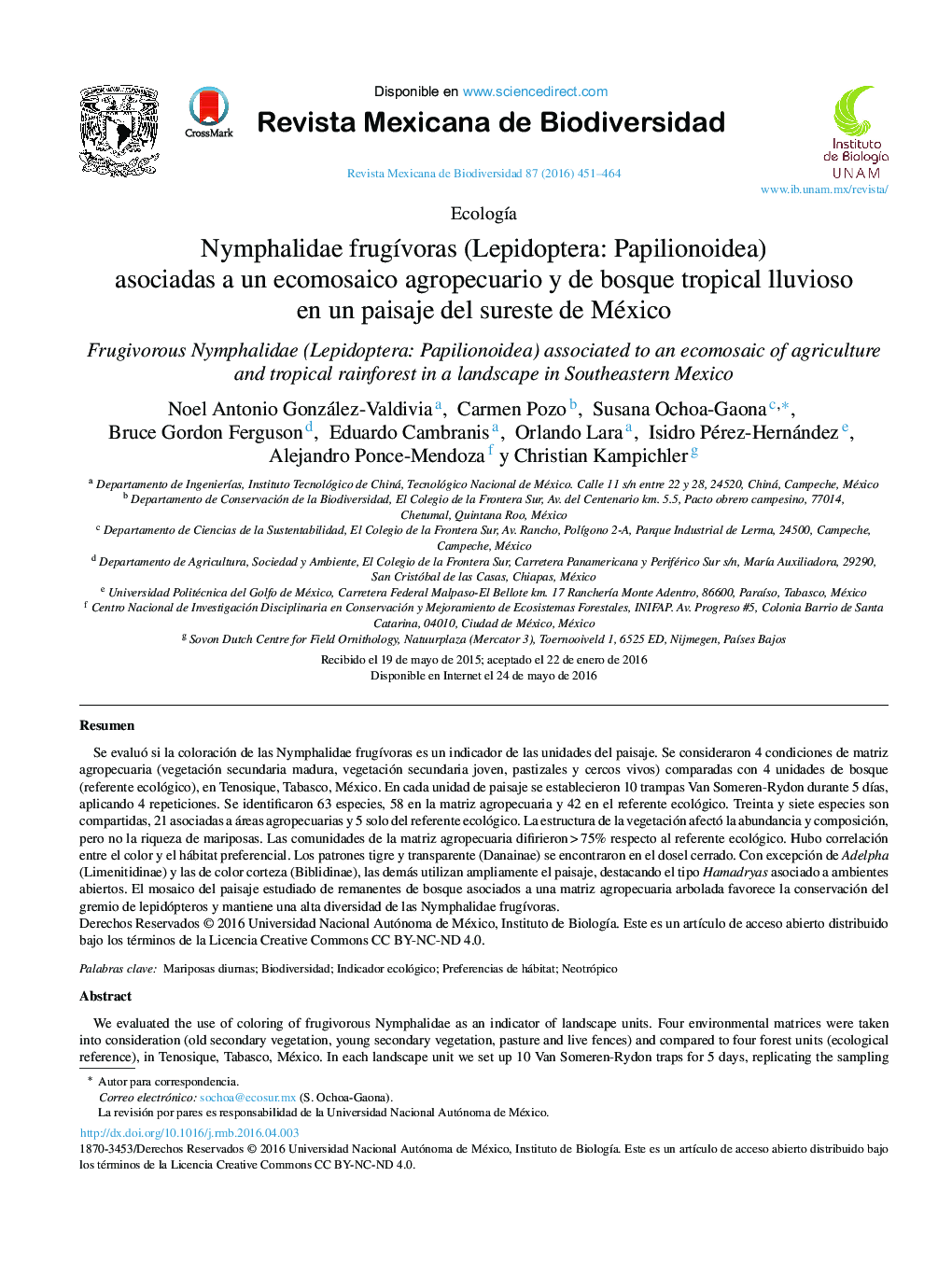| Article ID | Journal | Published Year | Pages | File Type |
|---|---|---|---|---|
| 4461267 | Revista Mexicana de Biodiversidad | 2016 | 14 Pages |
ResumenSe evaluó si la coloración de las Nymphalidae frugívoras es un indicador de las unidades del paisaje. Se consideraron 4 condiciones de matriz agropecuaria (vegetación secundaria madura, vegetación secundaria joven, pastizales y cercos vivos) comparadas con 4 unidades de bosque (referente ecológico), en Tenosique, Tabasco, México. En cada unidad de paisaje se establecieron 10 trampas Van Someren-Rydon durante 5 días, aplicando 4 repeticiones. Se identificaron 63 especies, 58 en la matriz agropecuaria y 42 en el referente ecológico. Treinta y siete especies son compartidas, 21 asociadas a áreas agropecuarias y 5 solo del referente ecológico. La estructura de la vegetación afectó la abundancia y composición, pero no la riqueza de mariposas. Las comunidades de la matriz agropecuaria difirieron > 75% respecto al referente ecológico. Hubo correlación entre el color y el hábitat preferencial. Los patrones tigre y transparente (Danainae) se encontraron en el dosel cerrado. Con excepción de Adelpha (Limenitidinae) y las de color corteza (Biblidinae), las demás utilizan ampliamente el paisaje, destacando el tipo Hamadryas asociado a ambientes abiertos. El mosaico del paisaje estudiado de remanentes de bosque asociados a una matriz agropecuaria arbolada favorece la conservación del gremio de lepidópteros y mantiene una alta diversidad de las Nymphalidae frugívoras.
We evaluated the use of coloring of frugivorous Nymphalidae as an indicator of landscape units. Four environmental matrices were taken into consideration (old secondary vegetation, young secondary vegetation, pasture and live fences) and compared to four forest units (ecological reference), in Tenosique, Tabasco, México. In each landscape unit we set up 10 Van Someren-Rydon traps for 5 days, replicating the sampling 4 times. In total 63 species were identified, with 58 in the agricultural matrix and 42 in forested units. Of the total, 37 species were shared, 21 associated to agricultural areas and 5 to the forest units. The structure of the vegetation affected the species abundance and composition, but not the butterfly richness. The communities of butterflies in pasture lands and in fallows differ > 75% of those of the forest units. There was correlation between color and preferential habitat. Tiger and transparent patterns (Danainae) prefer the closed canopy. Excepting Adelpha (Limenitidinae,) and those with bark colour (Biblidinae), all others are widely distributed in the landscape, particularly the Hamadryas type were associated with open environments. The landscape resulting from management, where forest remnants are mixed with agricultural plots and secondary vegetation in various stages of succession, seems to favor the conservation of Lepidoptera and to maintain a high diversity of frugivorous Nymphalidae.
